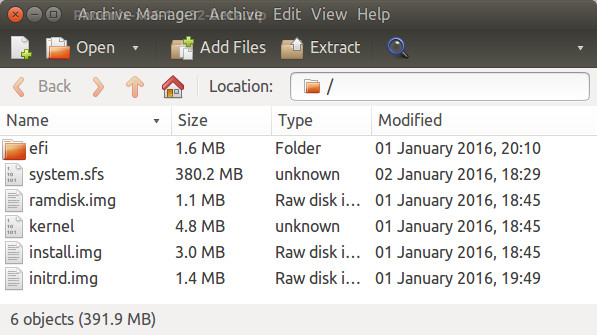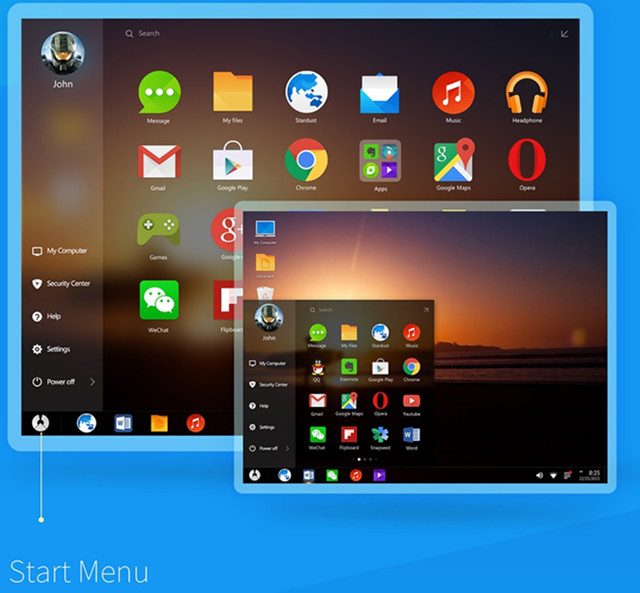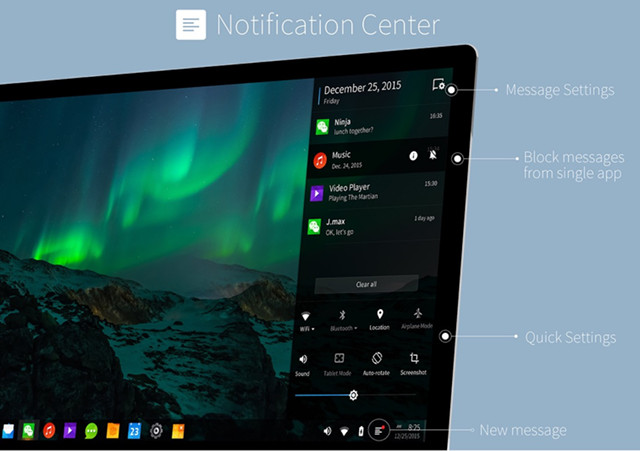After Light Biz OS, Remix OS, and Console OS, here’s another Android distribution that aims at creating better desktop experience in Android. Phoenix OS works on some ARM platforms, namely Nexus 9 and Nexus 10, as well as 64-bit x86 processors and like the x86 version of of Remix OS is based on Android-x86 project.
Just like other alternatives, it adds features usually found in Windows or Linux distributions such as a start menu, a task bar, multi-window support, notification handling via the taskbar, etc…
If you’d like to try it out in a computer with an Intel or AMD computer, you can follow the instructions below from a Windows machine:
- Prepare a 4GB+ flash drive
- Download the latest Zip file of Phoenix OS (x86) to your PC, currently Phoenix-x86-1.0-32-beta.zip
- Download and install USBMaker tool to your PC
- Start USBMaker.exe, select the flash drive and Zip file, and press “Write” () to make a bootable device.
- Select the USB drive to boot Phoenix OS on your computer, and enjoy
Since I did not feel like running a Windows VM to do that, I investigated ways to do so in Linux, but sadly it did not find a way to create a bootable ISO image using the content of the zip file.
 Android-x86 ISO file also has some extra files including isolinux directory, and I tried to merge it with Phoenix OS, and create an ISO file with Brasero, but no lock. Since Android-x86 is distributed with an ISO, and Phoenix OS is based on Android-x86 project, it should also be possible to create an ISO, but I have not found a way yet. Checking how Android-x86 source code should help. It’s worth noting that Phoenix OS source code does not seem available.
Android-x86 ISO file also has some extra files including isolinux directory, and I tried to merge it with Phoenix OS, and create an ISO file with Brasero, but no lock. Since Android-x86 is distributed with an ISO, and Phoenix OS is based on Android-x86 project, it should also be possible to create an ISO, but I have not found a way yet. Checking how Android-x86 source code should help. It’s worth noting that Phoenix OS source code does not seem available.
Nevertheless, Liliputing tried it on actual computers, and found it looked like very much like Remix OS, and uses persistent mode to save your data in the flash drive, so you don’t need to re-install apps or login to services again next time you boot your computer, or another one, with the flash drive.
You can visit Phoenix OS website for more information.

Jean-Luc started CNX Software in 2010 as a part-time endeavor, before quitting his job as a software engineering manager, and starting to write daily news, and reviews full time later in 2011.
Support CNX Software! Donate via cryptocurrencies, become a Patron on Patreon, or purchase goods on Amazon or Aliexpress






